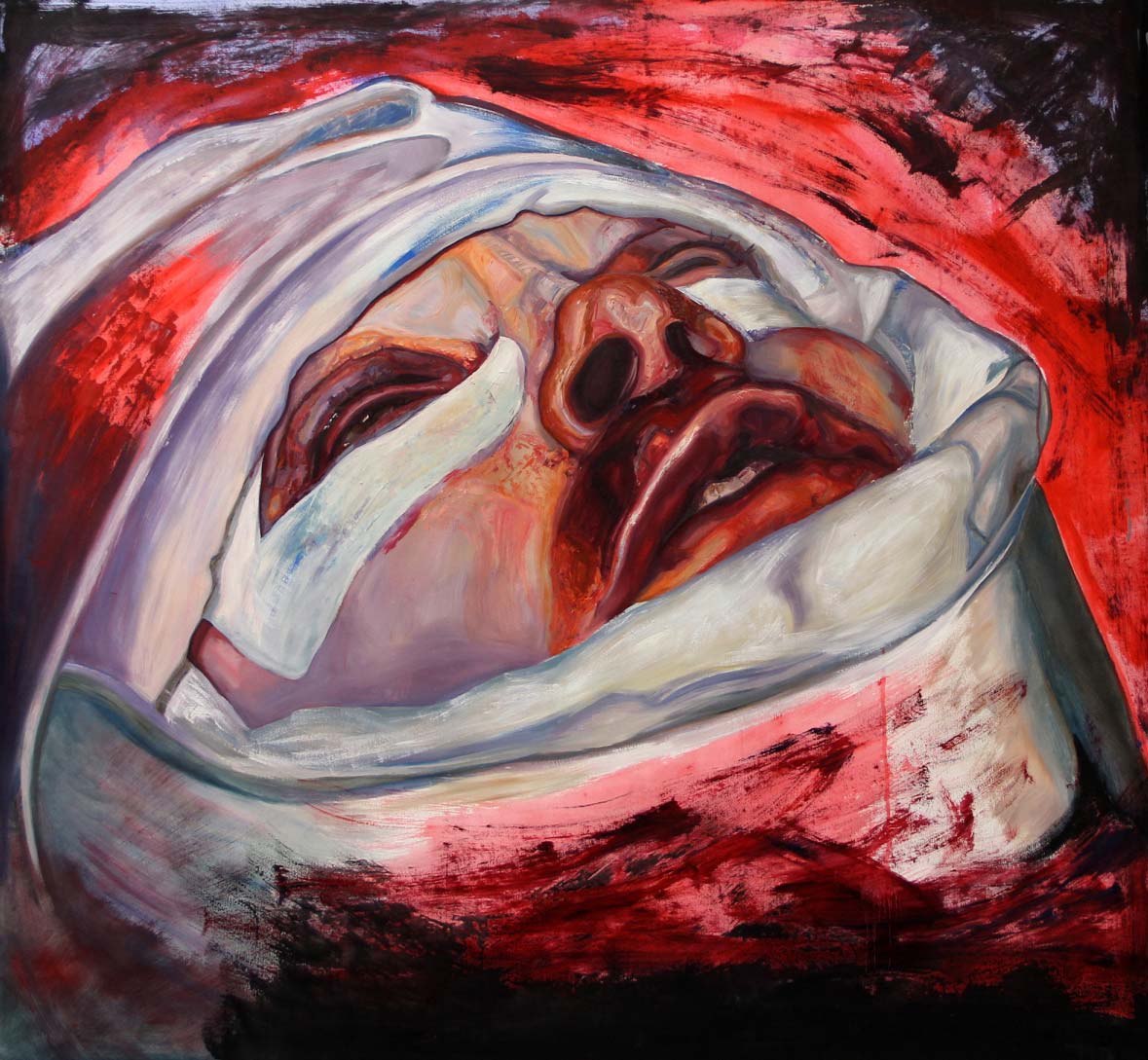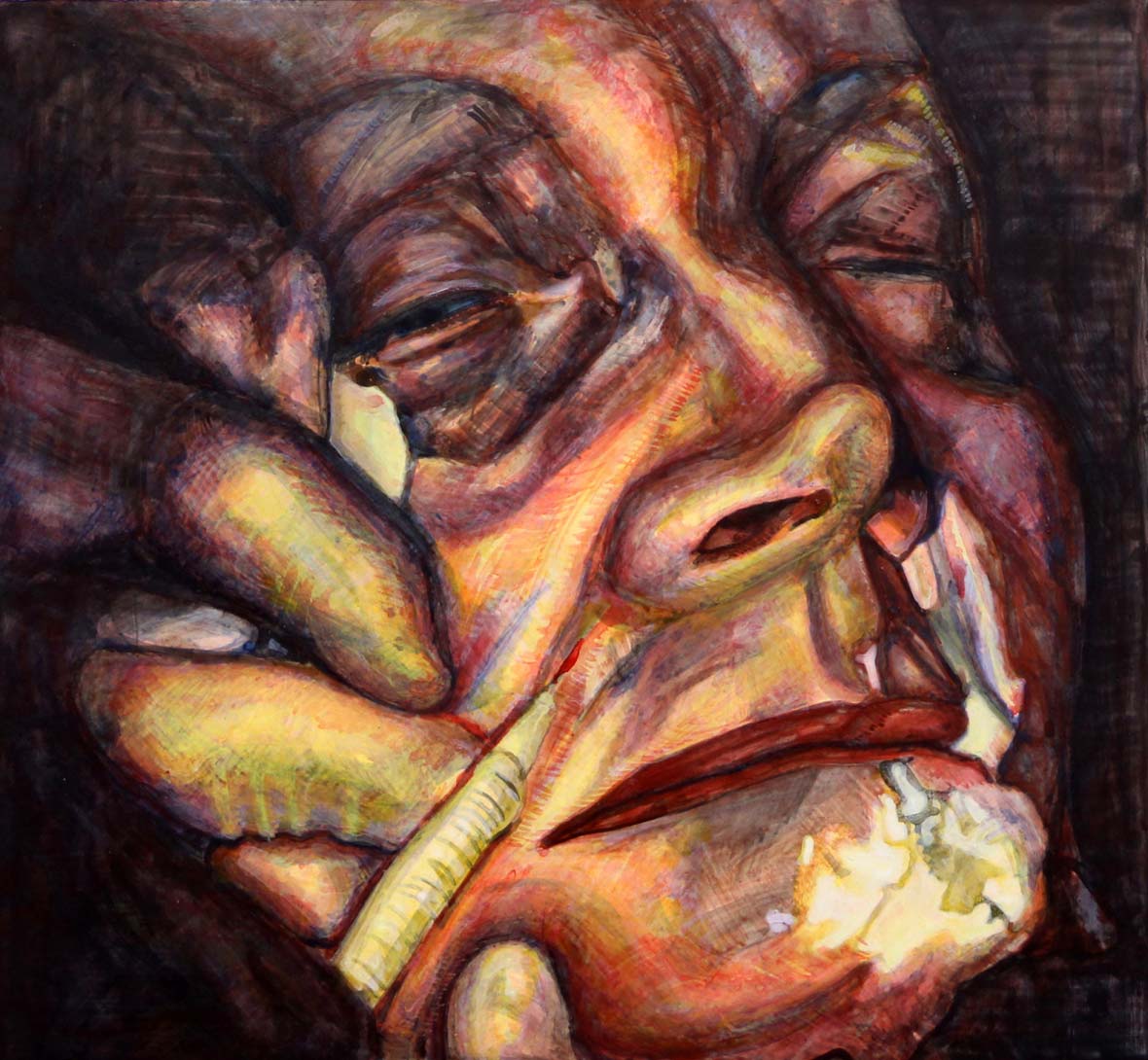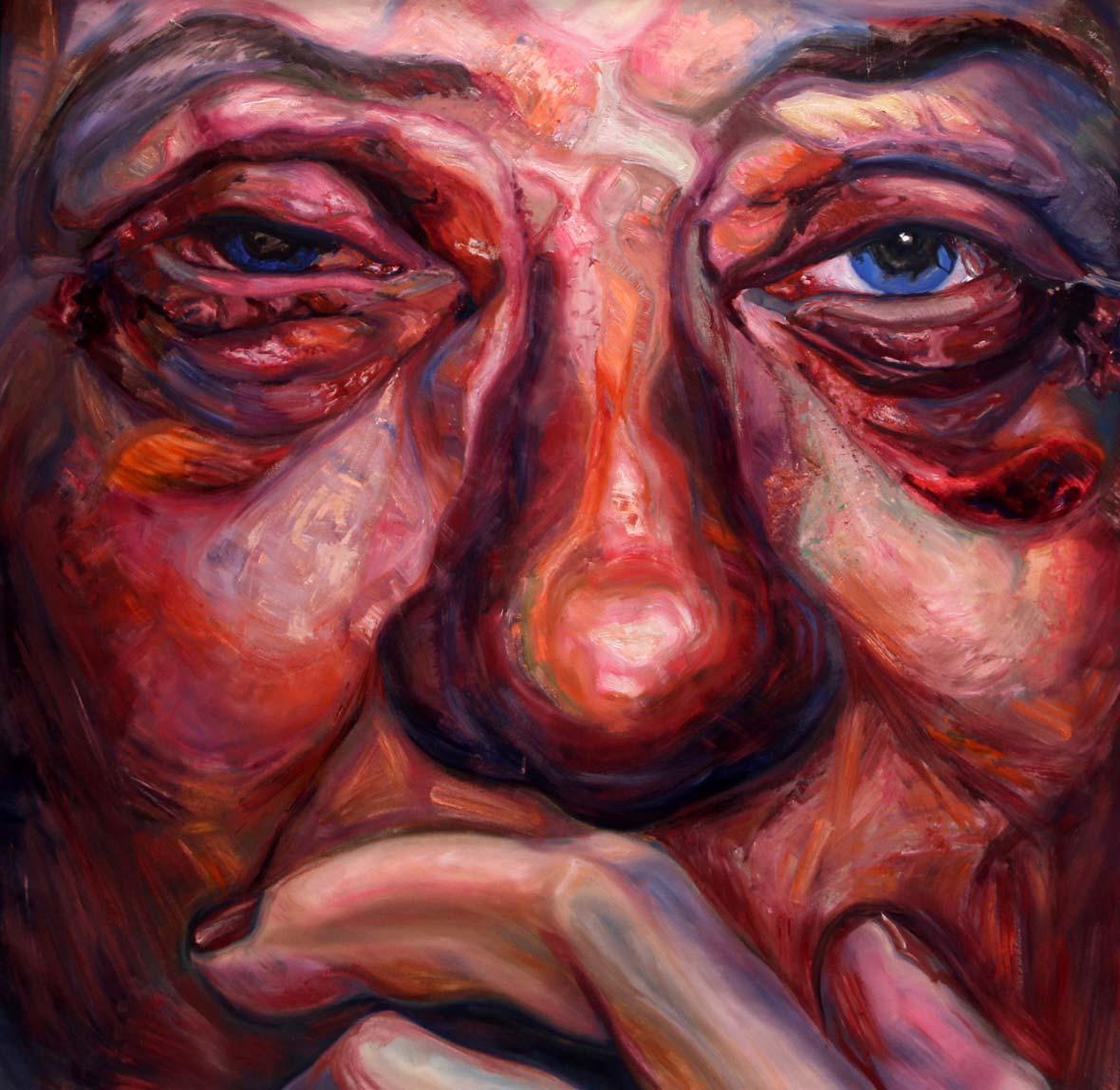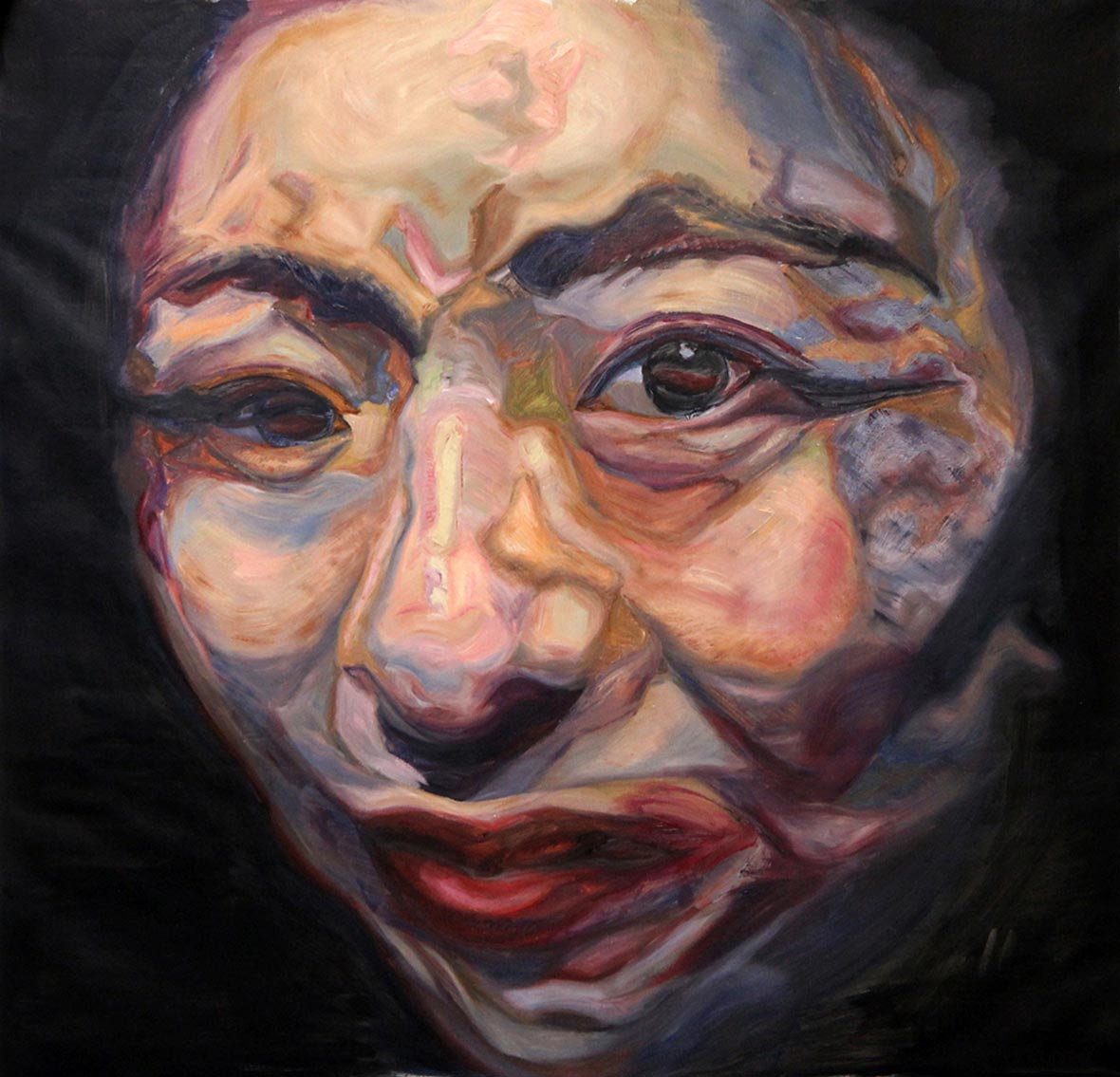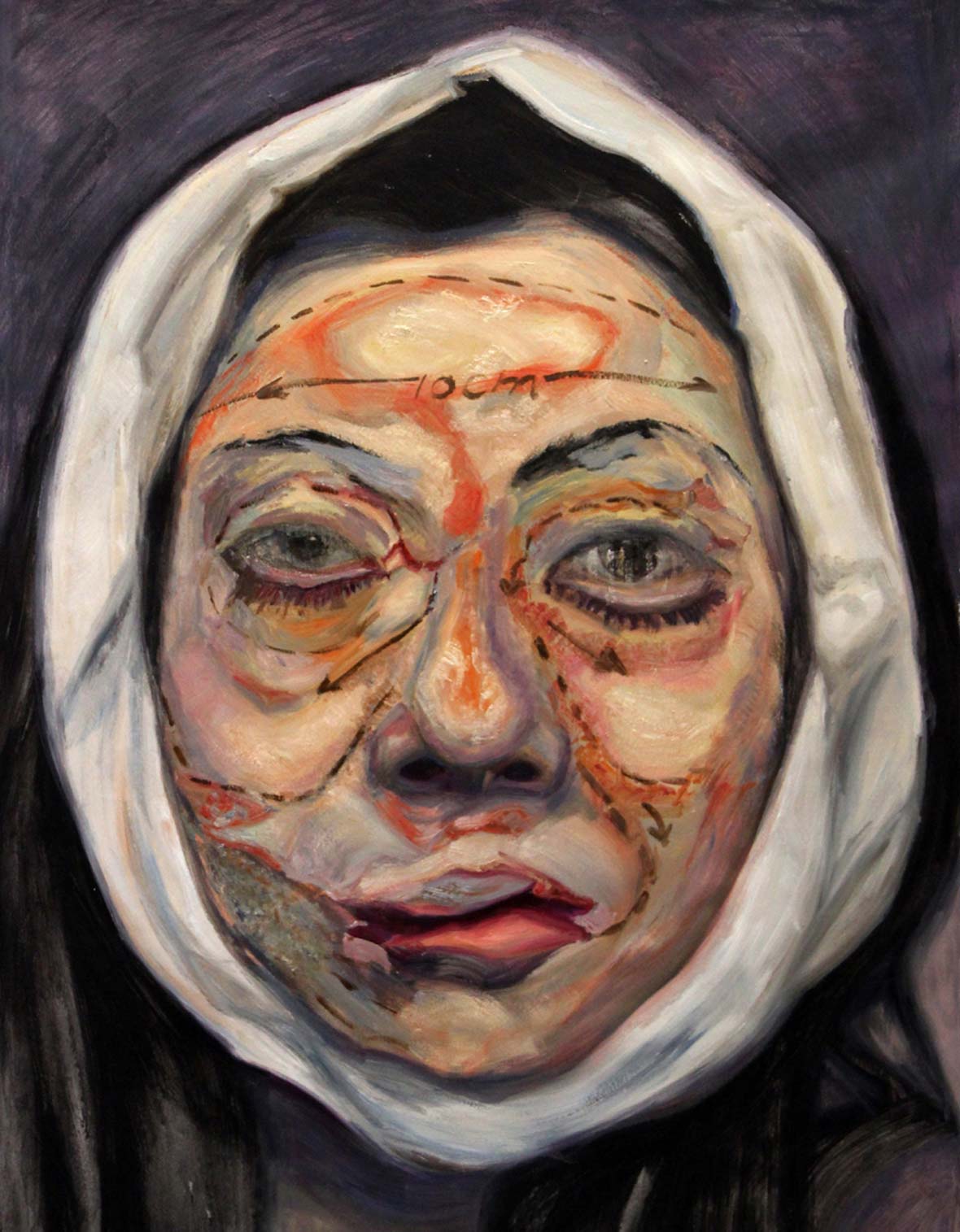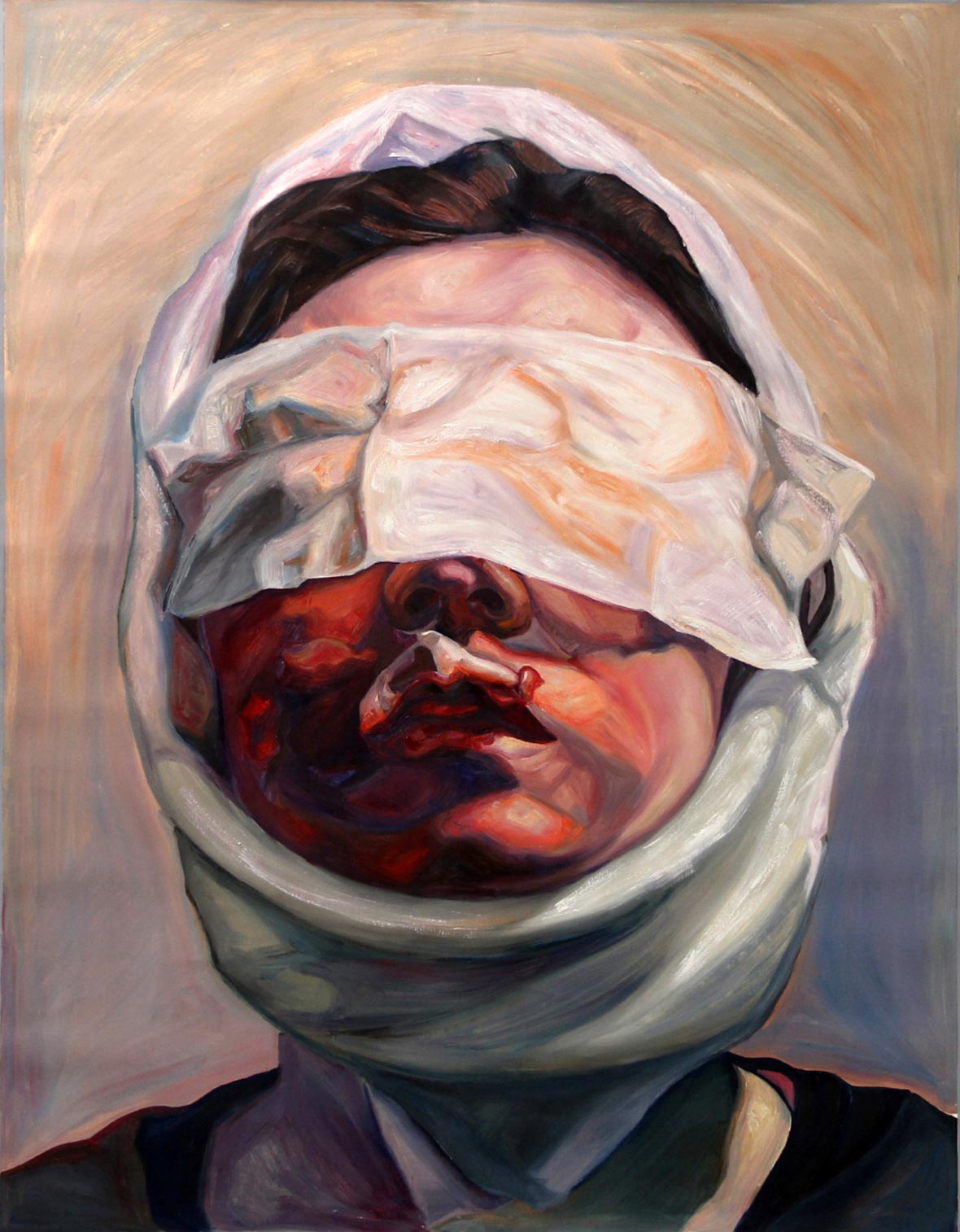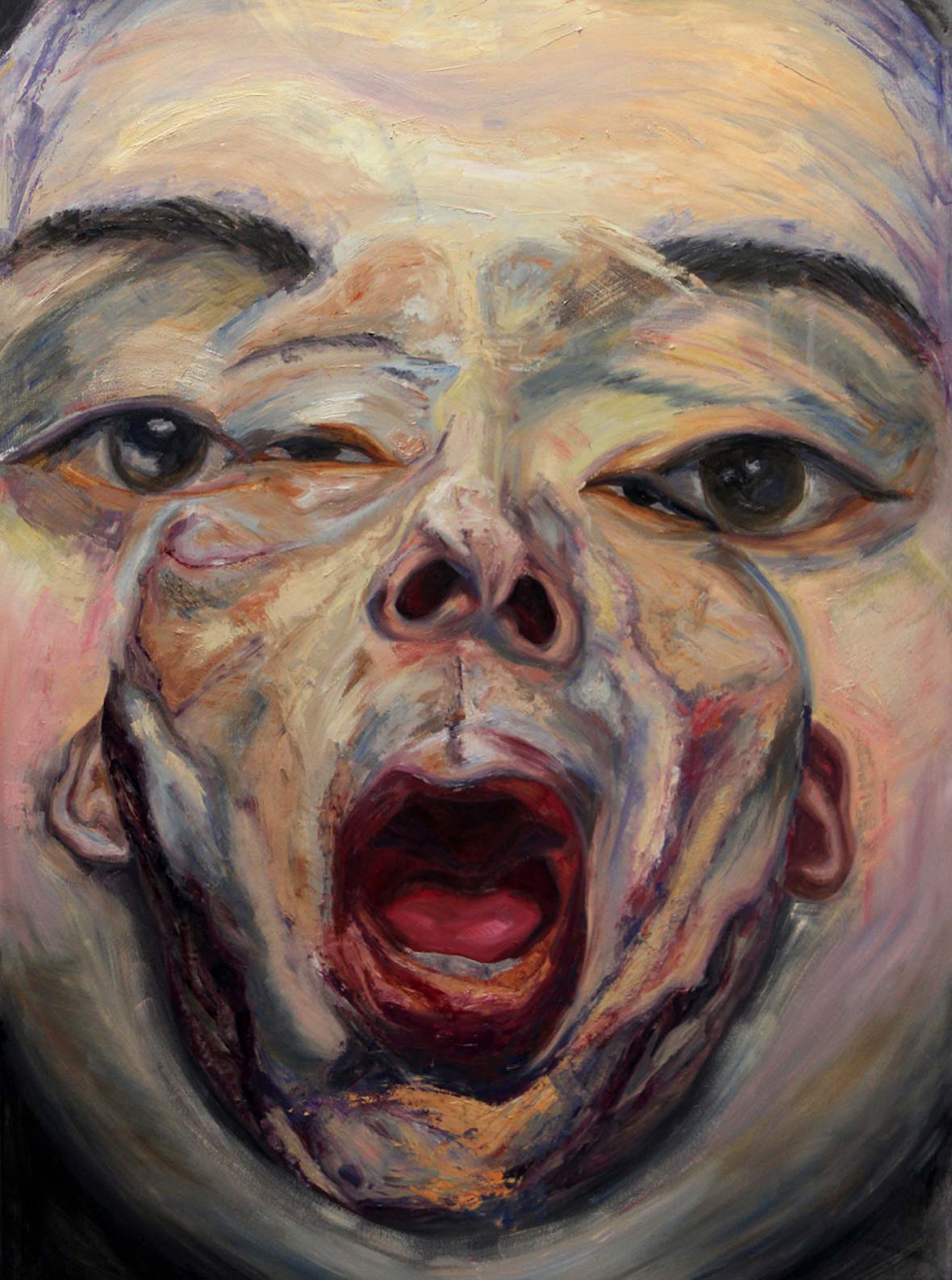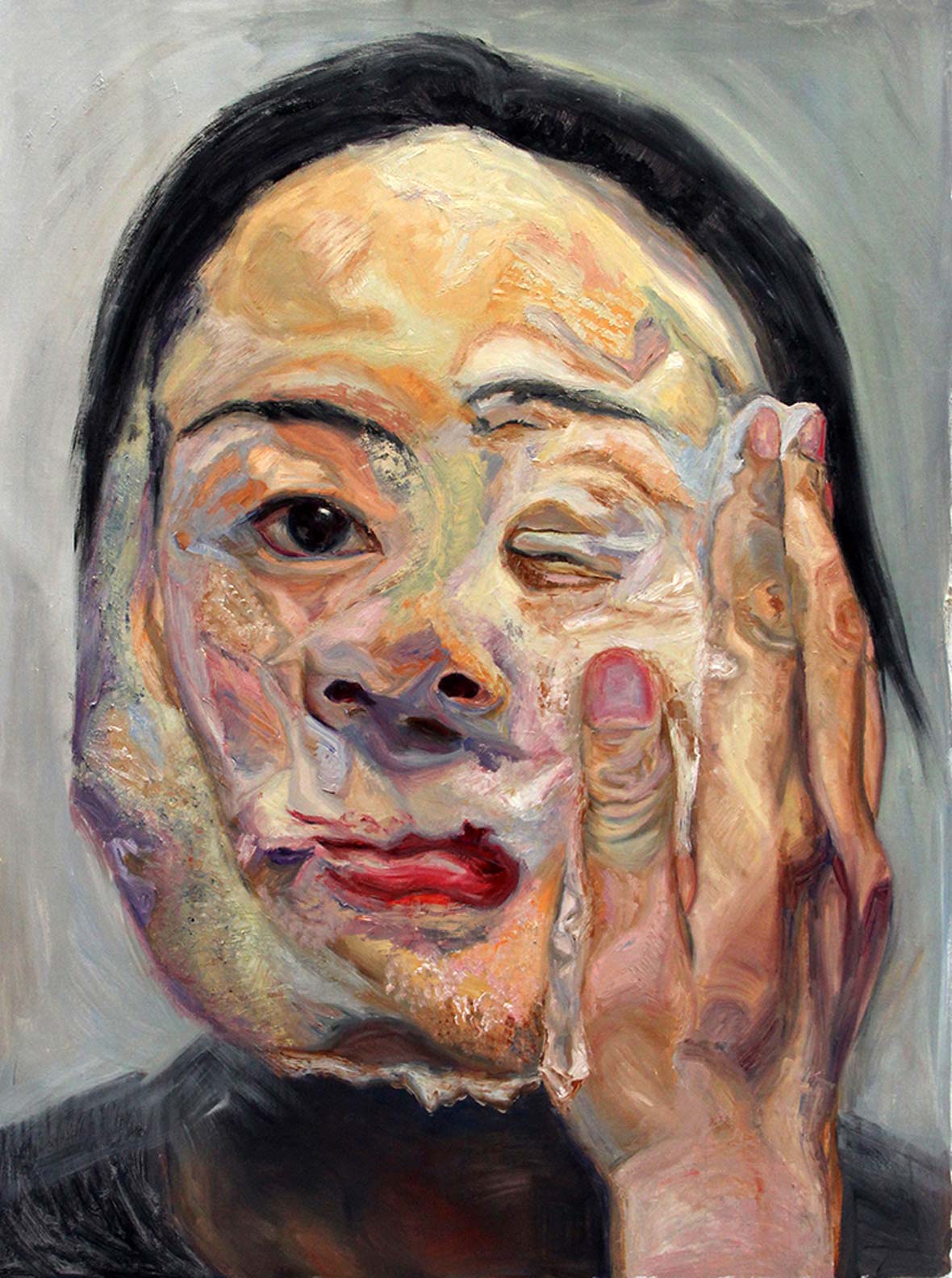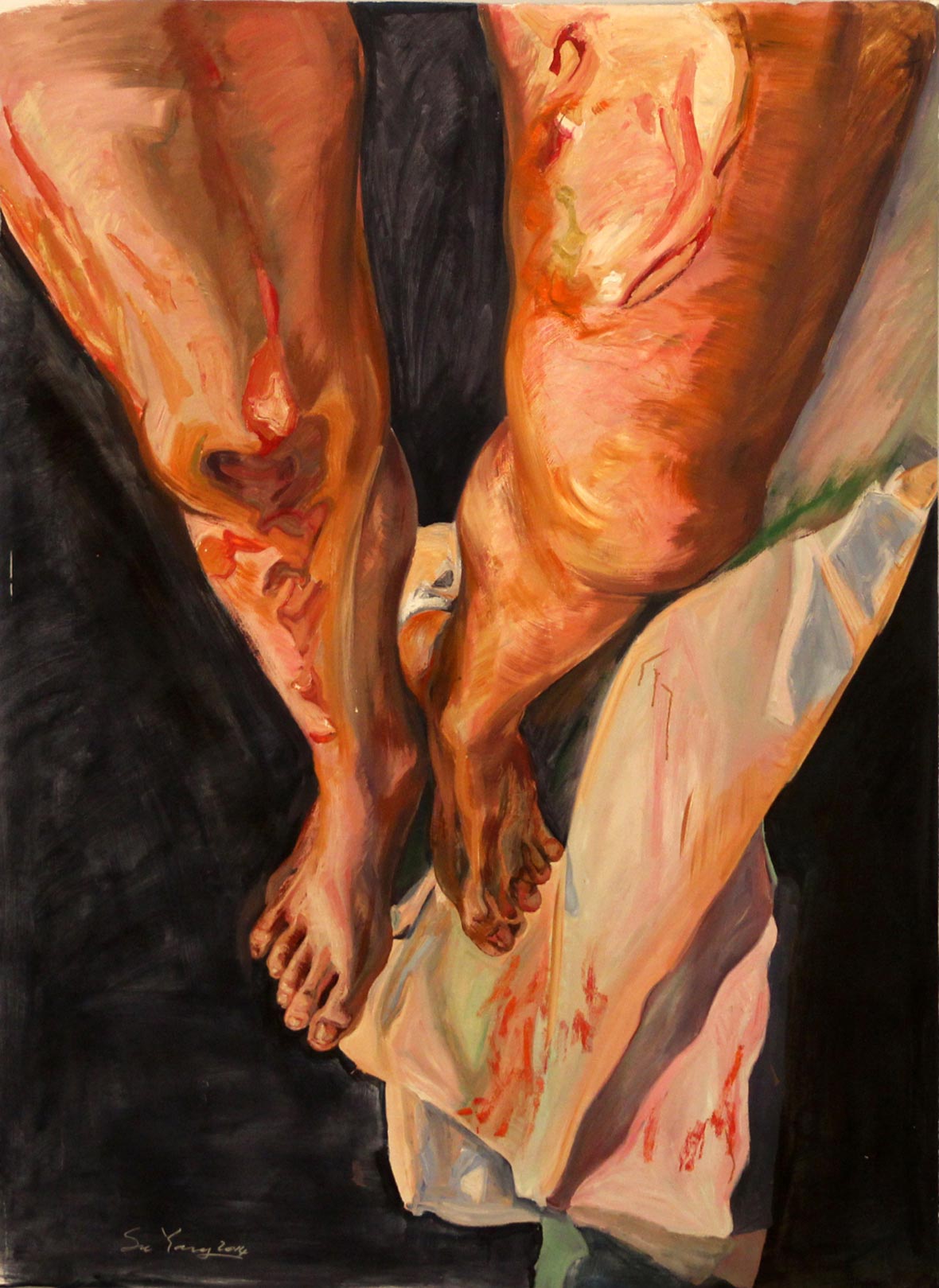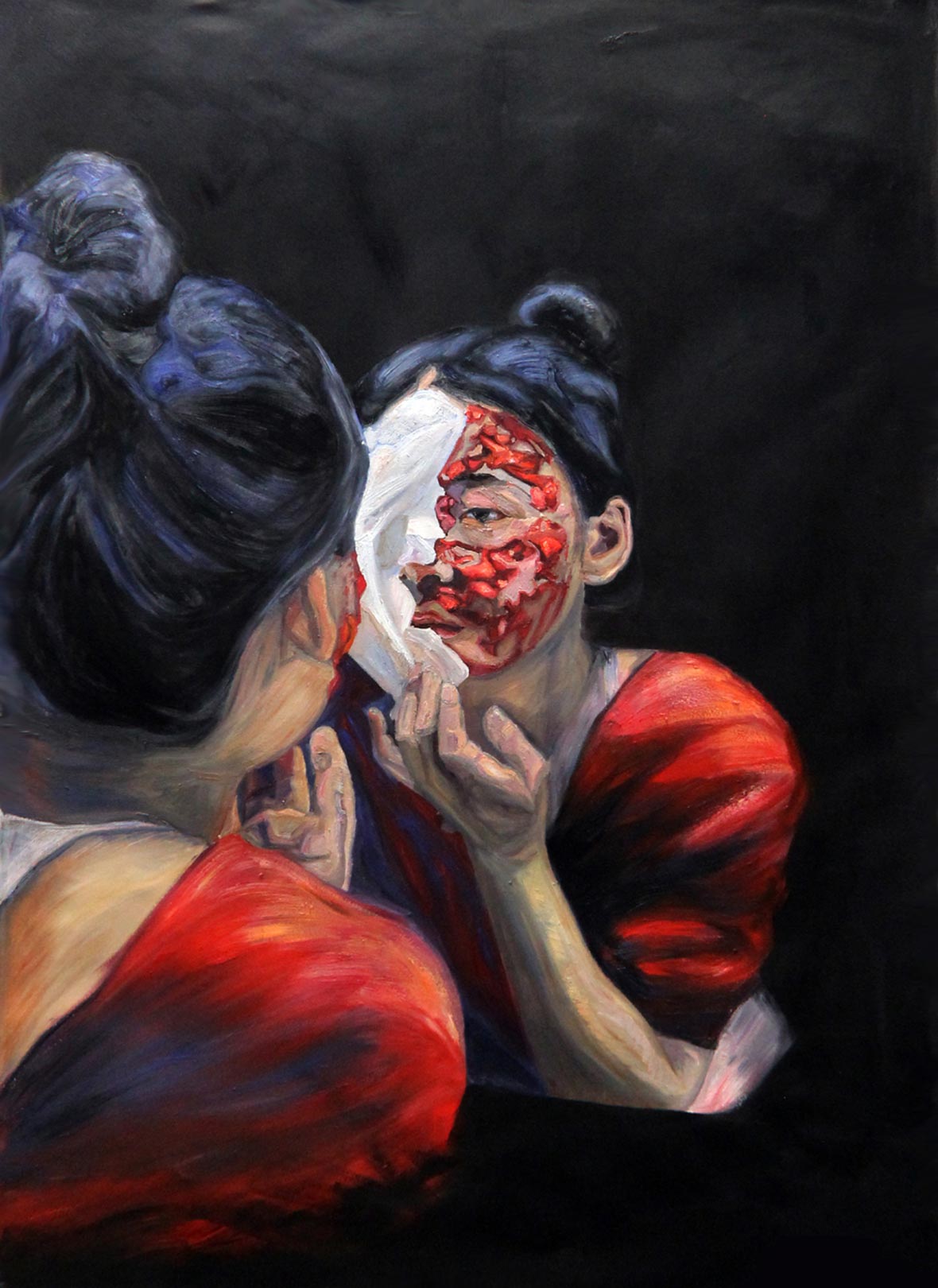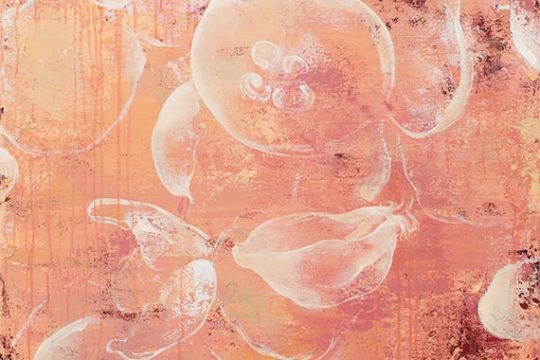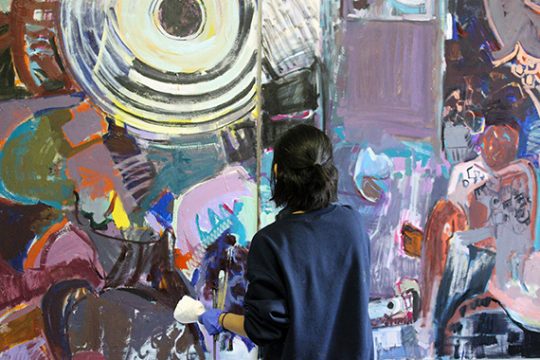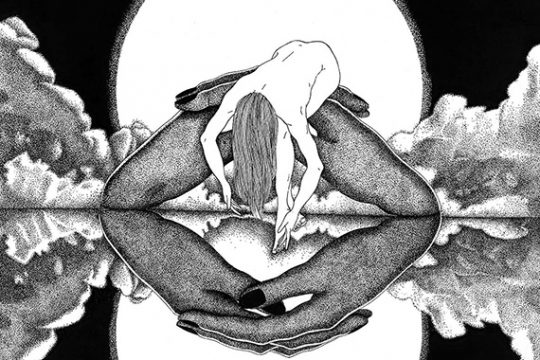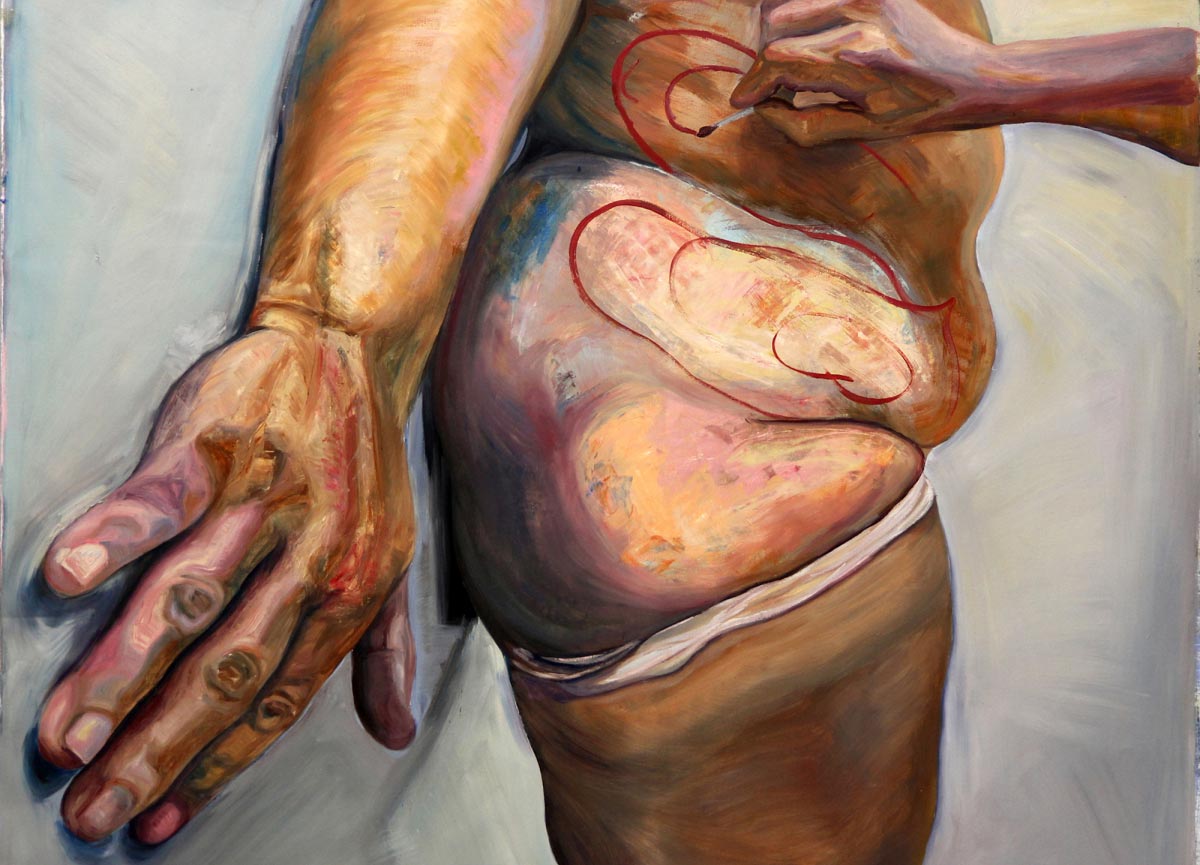
Cosmetic surgery is not for the faint of heart. No matter how you slice it, cutting people open to reshape their features is a gory business. Patients are wheeled home bandaged like mummies to start on a recovery that can take weeks. Once the swelling subsides and the scars fade, patients may well be happy with the results, but it’s a grim irony that a procedure to make you more beautiful can leave you looking—on the short term at least—like an extra in a slasher flick.
This awkward interim period, when patients have only just emerged from the operating chamber, is the starting point for Su Yang‘s paintings. Her work portrays in grisly detail the immediate effects of the pursuit of perfection: the bruises, the blood, the gauze, the swelling. She paints in oil and tempera, in garish reds and purples, and her works quite intentionally have something of a horror show about them. Yet the paintings are more than gross-out pics: Yang offers them as a critique of the beauty standards that lead women to submit to traumatizing procedures.
整容手术并不适合那些胆子不够大的人。无论如何,把人们的身体划开、切开、再塑形,听起来都像是一件血淋淋的可怕差事。手术后,整容者坐着轮椅,被包扎得像木乃伊,开始为期数周的恢复过程。一旦肿胀消退、疤痕淡去,他们可能对成果感到满意。但令人感到讽刺的是,整容手术明明是为了让人变得更美丽,却有可能让你(起码在短时间内)看上去像是血腥恐怖电影的一员。
当整容者刚刚结束手术,接下来要面对的那段尴尬过渡期启发了杨苏的创作。在作品中,她以触目惊心的细节,描绘出这种为追求完美所引发的立即后果:瘀伤、鲜血、纱布、肿胀。她使用油画和丹培拉,刻意涂上过分鲜艶的红色和紫色让作品看起来更惊悚。然而,她的画作不仅仅是一些令人不敢直视的画面,更是用于批判当今逼使女性经历这些创伤所达到审美标准的警语。
Yang is a scholar and artist from China. She learned to paint and draw from her father, who began instructing her in European techniques at a young age. In college, at Tsinghua University, she continued to paint, and also studied sculpture, lacquer, glass art, and graphic design. While doing a master’s in fine arts at the State University of New York at Buffalo, she discovered an interest in feminism, and since then her art has explored the procedures that women, particularly Chinese women, undergo to make their bodies conform to patriarchal ideas of beauty. She’s now working toward a PhD in visual art at the University of Melbourne, where she uses her art and research to explore the demands women face in the name of beauty.
杨苏是来自中国的一名学者和艺术家。她从小跟着父亲学习绘画,教授她欧洲绘画的技法。在清华大学就读期间,她继续画画,同时学习雕塑、漆器、玻璃艺术,以及平面设计。在纽约州立大学水牛城分校(State University of New York at Buffalo)修读美术硕士学位期间,她渐渐发展了女权主义方面的兴趣。从那时起,她开始通过艺术去探讨女性——尤其是中国女性——为了父权社会的审美观念而整容的议题。现在,她正在墨尔本大学修读视觉艺术的博士学位,用自己的艺术创作和研究,探索那些“以美之名”对女性提出的种种要求。
Are her paintings a condemnation of cosmetic surgery? For Yang, that’s not quite the point. “It’s more that my works emphasize the ideologies that encourage many young Chinese women to become the same single person, without their own features,” she says. In that sense, she views these beauty-enhancement procedures as a symptom of a larger problem: the pressure to conform to uniform, unrealistic standards.
她的作品是对整容手术的谴责吗?对于杨苏来说并不完全是。“我的作品更多的是想强调那种鼓励中国年轻女性将自己变成同一个模子刻出的产品、失去自我特色的意识形态。”她解释道。从这个意义上来看,她认为这些让人变美的手术隐含一个更大的问题:让人们顺应不切实际的统一标准的压力。
In her academic work, Yang focuses on China, where cosmetic surgery is a booming industry. She notes that the pressures to look pretty are somewhat different in Australia and the US. “The notions of beauty are localized and formed by their own cultural and social histories,” she says. “However, I also see similarities in these standards, which are partly formed by a global consumer culture.” Her subjects are not limited to China but seem to show women of various ages and ethnicities.
She also doesn’t solely paint straightforward post-op portraits. Some of her works use cosmetic procedures as a starting point but take a more fantastic turn, with faces within faces, or people peeling off their skin.
杨苏的学术作品研究了审美标准如何影响中国女性。她指出在这么一个整容行业蓬勃发展的国家里,女性承受的变美压力,与在澳大利亚和美国有所不同。她说:“人们对美的看法是本地化的,受当地文化和社会历史所影响。不过,这些标准也有相似之处。部分原因是全球消费文化所导致。”她的研究对象不限于中国女性,也会涵括不同年龄和国籍。
她的创作不只描画人们的术后肖像,其他一些作品以化妆过程作为出发点,再加入一些奇幻的构想,譬如脸中有脸,或是人们剥掉皮肤。
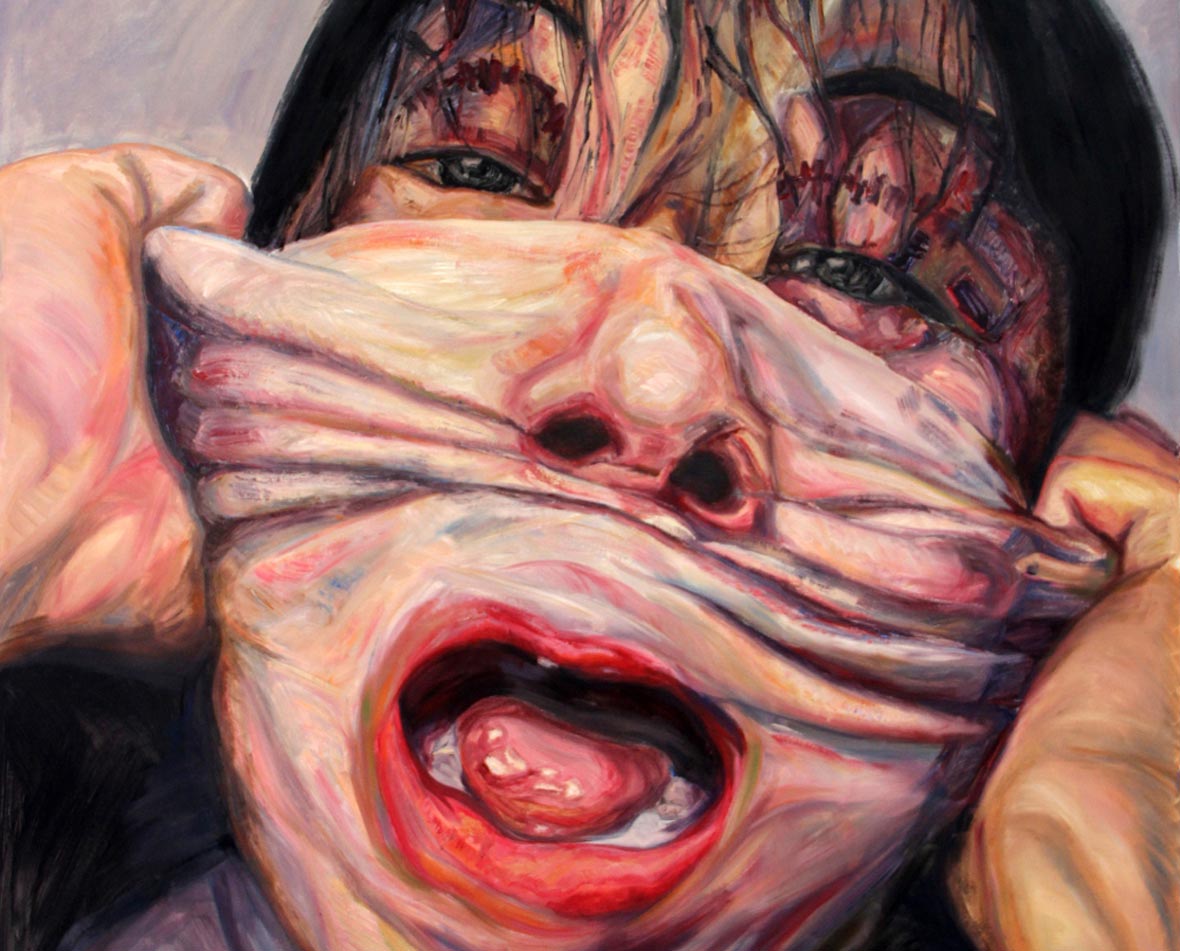
Critiques of cosmetic surgery often poke fun at the dead eyes or frozen smiles of a procedure gone awry. Yang takes a different tack, showing a side of the cosmetic industry that’s seldom seen—the seamy underbelly, as it were, that’s surgically tucked out of sight. For many people, it seems, beauty is a bloody pursuit.
人们在批评整容手术时,常常会举例一些失败的案例,譬如那些死气沉沉的眼睛或是僵硬的笑容。但杨苏却采取了不同的策略,她选择揭示美容行业鲜为人知的一面——通过手术隐藏起来的丑陋。对许多人来说,美丽也是一种血腥的理想。

